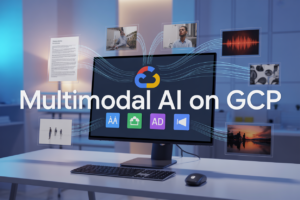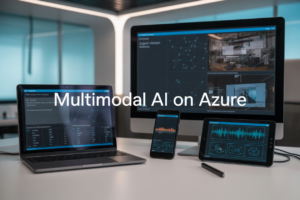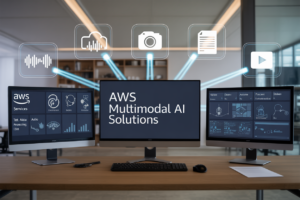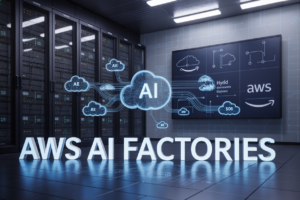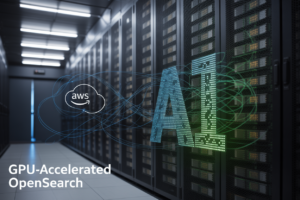Ever try drinking from a fire hose? That’s essentially what companies without proper data pipelines are doing with their information—drowning in a torrent they can’t possibly consume effectively.
For data engineers and tech leaders struggling with fragmented systems, understanding data pipelines isn’t just another technical concept—it’s the difference between actionable insights and data chaos.
A data pipeline orchestrates the journey of information from disparate sources to valuable business intelligence, ensuring your data flows smoothly instead of flooding your systems. The right pipeline architecture transforms raw, messy data into something that actually drives decisions.
But here’s what most pipeline tutorials won’t tell you: the architecture that worked beautifully for your competitor might completely fail in your environment. Why? That’s where things get interesting…
Defining Data Pipelines in Simple Terms
The Core Components of a Modern Data Pipeline
Think of data pipelines as invisible highways moving your data from messy piles to neatly organized insights. They consist of four key elements: sources (where data originates), processing steps (cleaning and transforming), storage systems (where processed data lives), and analytics tools (turning data into business gold). Without these components working together, your data remains just… data.
How Data Pipelines Transform Raw Data into Valuable Insights
Raw data is like uncut diamonds – valuable but not immediately useful. Data pipelines polish these rough stones through a series of transformations. First, they collect scattered data points. Then they clean out errors, standardize formats, and enrich with context. Finally, they deliver structured datasets that answer specific business questions. The magic happens in these transformation steps.
Key Differences Between Data Pipelines and ETL Processes
ETL is your old reliable sedan, while data pipelines are the modern sports car. ETL (Extract, Transform, Load) follows a rigid sequence with batch processing. Data pipelines offer flexibility, supporting real-time processing, multiple destinations, and bi-directional flows. ETL is a subset of what pipelines can do – like saying all sedans are cars, but not all cars are sedans.
Real-World Analogies to Understand Data Pipeline Functionality
Picture a restaurant kitchen during dinner rush. Raw ingredients (data sources) move through prep stations (transformations) to become finished dishes (insights). The chef coordinates timing, ensures quality, and manages bottlenecks – exactly what data pipeline orchestration does. When ingredients arrive late or stations get backed up, the entire service suffers, just like pipeline failures impact business decisions.
The Evolution of Data Engineering Infrastructure
From Manual Data Processing to Automated Pipelines
Remember when data teams manually coded ETL jobs for every single data source? Those days are gone. Modern data infrastructure has evolved from painstaking manual processes to sleek, automated pipelines that handle billions of data points without breaking a sweat. This shift didn’t happen overnight, but it changed everything about how we work with data.
How Cloud Computing Revolutionized Data Pipeline Architecture
Cloud changed the game entirely. Before AWS, Google Cloud and Azure, companies needed massive on-premise server farms and specialized teams just to store their data. Now, you can spin up infinitely scalable infrastructure with a few clicks. Cloud providers deliver the computing muscle, storage capacity, and specialized services that make modern data pipelines possible without the headache of managing hardware.
The Shift from Batch to Real-Time Data Processing
Batch processing used to be the only option – collect data all day, process it overnight, and hope the reports were ready by morning. Now? Real-time is king. Companies process streaming data as it arrives, making decisions in milliseconds instead of days. This evolution from nightly batch jobs to continuous data streams has transformed businesses that need immediate insights to stay competitive.
Essential Benefits of Implementing Data Pipelines
Essential Benefits of Implementing Data Pipelines
A. Eliminating Data Silos for Better Business Intelligence
Data silos are the silent killers of business intelligence. When your marketing team can’t access sales data or your analysts are working with outdated information, opportunities vanish. Data pipelines break down these walls, creating a single source of truth that flows freely across your organization. No more contradictory reports or decision-making based on incomplete pictures.
B. Reducing Manual Errors Through Automation
Remember that time someone fat-fingered a crucial spreadsheet formula? Or when copying and pasting went horribly wrong before a big presentation? Data pipelines eliminate these heart-attack moments. By automating data movement and transformation, they remove human error from the equation. Your team can finally stop playing data janitor and focus on what they do best – analyzing insights and driving strategy.
C. Accelerating Time-to-Insight for Faster Decision Making
The business world doesn’t wait for slow data. Modern data pipelines shrink the gap between “something happened” and “we should do something about it” from days to minutes. When your competitor launches a surprise promotion, you don’t need to wait for next month’s report – your pipeline delivers real-time intelligence so you can respond immediately. That speed difference isn’t just convenient; it’s competitive advantage in action.
D. Enabling Scalability as Data Volumes Grow
Data volumes double every two years, but your team size doesn’t. Without proper pipelines, you’ll eventually hit a wall where manual processes collapse under data gravity. Robust pipelines handle exponential growth gracefully, scaling alongside your business without requiring proportional increases in headcount or computing resources. Your infrastructure becomes future-proof, ready to handle tomorrow’s data tsunamis with today’s resources.
E. Improving Data Quality and Governance
Garbage in, garbage out – but data pipelines help fix this age-old problem. By standardizing transformations, enforcing validation rules, and creating audit trails, pipelines dramatically improve data quality. They also simplify governance by centralizing control points, making compliance with regulations like GDPR or CCPA less of a scramble and more of a systematic process. Better data means better decisions, and better governance means fewer regulatory headaches.
Critical Components of Effective Data Pipeline Architecture
Critical Components of Effective Data Pipeline Architecture
A. Data Extraction Techniques and Best Practices
Ever tried squeezing water from a stone? That’s what poor data extraction feels like. Good extraction combines APIs, change data capture, and batch processing—all tailored to your source systems. The trick isn’t just pulling data, but doing it efficiently without hammering your production databases.
B. Transformation Logic That Adds Business Value
Raw data is like uncut diamonds—valuable but unusable. Smart transformation turns messy data into insights. This isn’t just cleaning; it’s enriching data with business context. The best pipelines apply transformations that directly answer business questions, not just technical ones.
C. Loading Strategies for Various Data Destinations
Your perfectly processed data needs the right home. Whether you’re feeding a data warehouse, lakehouse, or real-time analytics engine, loading strategies matter. Bulk inserts work for some cases, while incremental updates shine for others. Match your loading approach to both destination capabilities and business SLAs.
D. Monitoring and Observability Capabilities
Flying blind with data pipelines? Recipe for disaster. Modern pipelines need built-in observability—tracking data volume, quality metrics, processing times, and error rates. Without these eyes into your pipeline’s health, you’re just waiting for the next 3AM emergency call when things break.
Common Data Pipeline Challenges and Solutions
Common Data Pipeline Challenges and Solutions
A. Handling Data Volume, Variety, and Velocity Effectively
Building data pipelines that can manage the three Vs is no small feat. When your systems suddenly need to process terabytes instead of gigabytes, or handle structured and unstructured data simultaneously, things get messy fast. Smart companies tackle this by implementing progressive scaling, where pipelines automatically adjust resources based on incoming data loads. This prevents both overprovisioning (wasting money) and underprovisioning (causing failures).
B. Maintaining Pipeline Performance Under Heavy Loads
Your pipeline was cruising along just fine until Black Friday hit. Now it’s choking on data and everyone’s dashboard is frozen. Sound familiar? Performance bottlenecks typically happen at transformation stages where complex computations occur. The fix? Distributed processing frameworks like Spark that chunk the workload across multiple machines. Also, don’t underestimate the power of good old caching frequently-used datasets to reduce redundant processing.
C. Ensuring Data Security Throughout the Pipeline
Data security isn’t just about putting a lock on your database. It’s about protecting information at every stage of its journey. The nightmare scenario? Customer PII leaking because someone forgot to encrypt a temporary storage bucket. Effective pipelines implement end-to-end encryption, robust access controls, and data anonymization for sensitive fields. And yes, this includes those “temporary” staging areas everyone forgets about until the breach happens.
D. Managing Pipeline Dependencies and Failures
Nothing breaks confidence in data faster than finding out yesterday’s critical dashboard was built on failed pipeline runs. Dependency management is often the messiest part of pipeline architecture. Each step depends on previous ones completing successfully, creating a house of cards effect. Smart solutions include implementing circuit breakers that isolate failures, automatic retry mechanisms with exponential backoff, and comprehensive monitoring that alerts before users notice something’s wrong.
E. Controlling Costs in Cloud-Based Pipeline Environments
Cloud bills shocking you every month? You’re not alone. Cloud-based pipelines can quickly drain budgets when left unoptimized. The biggest culprits? Idle resources that keep running after jobs complete, over-allocated computing power, and inefficient storage patterns. Practical solutions include implementing auto-scaling that turns resources off when not needed, right-sizing compute resources based on actual workloads, and using storage tiering to move older data to cheaper storage options.
Popular Data Pipeline Tools and Technologies
A. Open-Source Frameworks for Building Custom Pipelines
Apache Airflow isn’t just popular—it’s practically the default choice for data engineers who need flexible, code-based pipeline orchestration. While Airflow dominates, NiFi shines for drag-and-drop simplicity, and Dagster’s rising because it treats data assets as first-class citizens. Each framework offers distinct advantages depending on your team’s technical chops and pipeline complexity.
B. Cloud-Native Pipeline Services Comparison
Cloud giants are battling hard for your pipeline dollars. AWS Glue offers serverless ETL with minimal setup, while Azure Data Factory excels at visual pipeline building and Microsoft ecosystem integration. Google Cloud Dataflow? Unbeatable for stream processing with its Beam model. The decision often boils down to your existing cloud footprint and specific performance needs.
C. Specialized Tools for Specific Industry Needs
Healthcare organizations gravitate toward Synthea for HIPAA-compliant data pipelines, while finance firms typically leverage Snowflake’s Financial Services Data Cloud for regulatory requirements. Retail companies? They’re all over Databricks’ Delta Live Tables for inventory optimization. These industry-specific tools bake in compliance and domain knowledge that generic solutions simply can’t match.
D. Emerging Technologies Reshaping Pipeline Development
Declarative pipeline frameworks like dbt are stealing the spotlight by letting analysts build transformations using simple SQL. Meanwhile, AI-assisted pipeline generation tools can now auto-detect schemas and suggest optimal data flows. The real game-changer? Pipeline observability platforms that catch data quality issues before they wreak havoc downstream.
Implementing Your First Data Pipeline
Implementing Your First Data Pipeline
A. Assessing Your Organization’s Data Pipeline Needs
Building a data pipeline isn’t just about jumping on the tech bandwagon. Start by figuring out what data matters to your business decisions. Which sources are critical? How fresh does your data need to be? What volumes are we talking about? Map your current pain points – maybe reports take forever or your teams are drowning in manual data tasks. This assessment forms your foundation.
B. Selecting the Right Tools Based on Use Cases
Picking pipeline tools is like choosing ingredients for a recipe – it depends on what you’re cooking up. For batch processing, Apache Airflow might be your best bet. Need real-time analytics? Look at Apache Kafka or Spark Streaming. Working with cloud data? AWS Glue, Azure Data Factory, or Google Dataflow could be perfect matches. Small team with limited coding? Consider no-code options like Fivetran or Matillion. The right tool matches your specific data challenges.
C. Step-by-Step Pipeline Design Process
- Define clear objectives – What business questions will this pipeline answer?
- Map your data journey – Sketch the complete flow from source to destination
- Choose your transformation logic – Decide how raw data becomes valuable insights
- Design for failure – Plan how your pipeline handles errors and exceptions
- Consider scalability – Build for tomorrow’s data volumes, not just today’s
- Document everything – Your future self (and colleagues) will thank you
Start simple with a minimal viable pipeline. You can add complexity later when you understand the full picture better.
D. Testing and Validating Pipeline Functionality
Nobody likes surprises in production. Test your pipeline with sample data sets first, then gradually increase volume to identify breaking points. Validate that transformed data matches your expected outputs exactly. Monitor processing times and resource usage closely. Set up alerts for pipeline failures and data quality issues. Remember that validation isn’t a one-time thing – build continuous monitoring into your pipeline architecture from day one.
Future Trends in Data Pipeline Development
AI-Driven Pipeline Optimization and Self-Healing
The future of data pipelines? It’s all about AI doing the heavy lifting. Picture this: pipelines that fix themselves when they break, optimize their own performance, and predict issues before they happen. No more 3 AM alerts because your data flow crashed. Machine learning algorithms are already starting to monitor pipeline health, automatically adjust resources, and even rewrite inefficient code segments on the fly.
The Impact of Serverless Computing on Pipeline Architecture
Gone are the days of provisioning servers and worrying about scaling. Serverless is changing everything about how we build data pipelines. You write the code that transforms your data, and the cloud provider handles all the infrastructure headaches. Pay only for what you use, scale instantly when traffic spikes, and forget about patching servers. Companies are seeing dramatic cost reductions while gaining flexibility they never thought possible.
Data Mesh and Decentralized Data Ownership
The centralized data team is dying. Data mesh flips the script by treating data as a product owned by domain experts, not IT specialists. Each business unit becomes responsible for their data pipelines, quality, and governance. This domain-driven design creates more responsive data systems that actually serve business needs. Early adopters report faster innovation cycles and better alignment between data infrastructure and business goals.
Real-Time Processing Becoming the New Standard
Batch processing? That’s so 2020. The competitive edge now belongs to companies processing data in real-time. Stream processing frameworks like Kafka, Flink, and Spark Streaming are enabling millisecond-level insights that transform customer experiences. From fraud detection to personalized recommendations, businesses can now react to events as they happen instead of analyzing what happened yesterday. This shift fundamentally changes what’s possible with data.
Data pipelines have become the backbone of modern data engineering, serving as the essential infrastructure that transforms raw data into valuable insights. Throughout this article, we’ve explored how these pipelines connect disparate data sources, automate complex workflows, and enable organizations to make data-driven decisions with confidence. From understanding the core components of pipeline architecture to navigating common challenges like data quality issues and scalability concerns, implementing robust data pipelines is no longer optional for businesses seeking to remain competitive in today’s data-centric landscape.
As you embark on your data pipeline journey, remember that the technology landscape continues to evolve rapidly. Cloud-native solutions, real-time processing capabilities, and AI-powered pipeline management tools are reshaping what’s possible. Whether you’re just starting with a simple ETL process or scaling sophisticated data operations across your enterprise, focus on building flexible, maintainable pipelines that align with your specific business objectives. The investment in proper data pipeline infrastructure today will pay dividends in the form of faster insights, improved data governance, and the agility to adapt to tomorrow’s data challenges.











